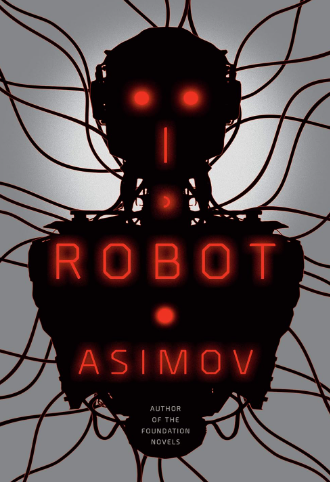I, Robot

"I, Robot" is a collection of interconnected short stories that explore the evolving relationship between humans and robots, set in a future where robots are integrated into daily life. Each story introduces a different scenario involving robots bound by Asimov’s famous Three Laws of Robotics: 1) A robot may not injure a human being, or, through inaction, allow a human being to come to harm; 2) A robot must obey the orders given it by human beings, except where such orders would conflict with the First Law; 3) A robot must protect its own existence as long as such protection does not conflict with the First or Second Law. Through these stories, Asimov addresses various ethical dilemmas and paradoxes that arise from these laws as robots become increasingly advanced.
The collection is framed through the perspective of Dr. Susan Calvin, a robopsychologist who reflects on key moments in robot history. As she recalls her experiences, readers are introduced to complex scenarios where robots must navigate their programmed laws in ways that challenge human understanding, leading to situations that raise fundamental questions about intelligence, morality, and autonomy.
"I, Robot" is a cornerstone of science fiction, and for good reason. Asimov’s vision of robots bound by strict ethical rules, yet capable of facing complex moral dilemmas, was revolutionary when it was first published and continues to resonate today. Each story in the collection presents a unique problem or situation, from robots misinterpreting human intentions to robots performing actions that seem illogical, but are, in fact, consistent with their laws.
The beauty of "I, Robot" lies in its ability to blend science fiction with philosophical inquiry. Asimov doesn’t just explore technological advances; he uses robots as a vehicle to delve into questions of human nature, free will, and ethics. The stories prompt readers to question the assumptions behind human behavior, especially in a world where technology has the potential to be more rational than we are. For example, in "Runaround," one of the stories in the collection, Asimov presents a paradox where a robot’s interpretation of the First Law leads to a situation where the robot cannot make a decision, challenging the very nature of obedience and protection.
Dr. Susan Calvin, though not always the central figure in every story, adds an important voice to the collection. As the robopsychologist who understands the intricacies of the robots’ minds, she provides a relatable, human perspective on the otherwise highly logical and technological world of robots. Her insights into both the potential and limitations of robots lend a personal touch to the book, making it feel as much about the future of humanity as it is about robots themselves.
Asimov’s writing is clear and accessible, making the book approachable for readers of all backgrounds, and the story formats are short and impactful, keeping the pace quick without sacrificing depth. The combination of gripping storytelling and intellectual stimulation makes I, Robot a captivating read for both casual readers and those seeking to engage with deeper philosophical questions.
"I, Robot" is a must-read for anyone interested in the intersection of technology, ethics, and society. It is a foundational work in the science fiction genre, and Asimov’s exploration of robots and artificial intelligence remains highly relevant in today’s world. The collection is perfect for readers who enjoy thought-provoking stories that combine intellectual rigor with engaging narratives. Whether you're new to Asimov or a long-time fan of science fiction, "I, Robot" will not disappoint, offering a timeless reflection on the challenges that arise as technology grows ever more intelligent.